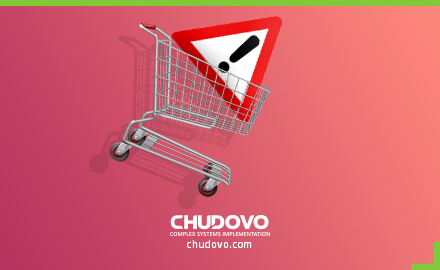Fintech Technology Trends to Expect in 2023-2024
Technology has grown in innovation over the years, and in one sub-section, we have seen improvements in the financial technology industry. Businesses and individuals have always needed a way to move money around and across borders faster, and fintech does that. And since covid happened, fintech companies have begun innovating to deliver efficient and secure financial services.
In this article, we take you through five of the most popular fintech industry trends to expect from 2023 up to 2024. You’ll learn what these fintech trends are, how to use them, and get some inspiration to implement them in your business and daily life for maximum productivity.
Table of Content
What is Fintech?
Fintech refers to computer software programs and other technology used to deliver financial services over the internet and make these services faster and easier to access. From banking to shopping, the fintech industry is disrupting the traditional finance space.
Years ago, you would’ve had to take a bus and queue at the bank to deposit or transfer money, invest in assets, or request even the smallest business loans. Today, people can do all that and more online, thanks to fintech companies and super apps.
Fintech includes services from banking, investment, loan applications, and mortgages and covers big data, machine learning, and even cryptocurrency. Examples of fintech products include payment platforms like Paypal and mobile app technologies like mobile banking apps for traditional banks.
Trends in Fintech To Expect in 2023 to 2024
Given the global pandemic and economic crosses, several fintech trends have been developed to solve pressing issues. While these are just predictions, don’t be surprised when you start to see software development trends in fintech also moving in this direction.
Some of the top fintech trends to watch out for in 2023 to 2024 include:
- Virtual banks or Neobanks
- Blockchain technology
- Embedded finance
- Buy now, pay later (BNPL)
- Contactless payment
Let’s look at these financial fintech industry trends, how they’re currently being implemented, and their pros and cons.
Virtual Banks or Neobanks
During the pandemic of 2020 and most of 2021, the global lockdown period prevented banking customers from visiting the bank to perform transactions and make inquiries. Commercial financial institutions, in turn, responded by providing financial services through digital banking operations on mobile devices. What this move brought with it was the sudden realization and need for fully virtual banks.
Virtual banks, or Neobanks, are entirely virtual banks that do not need brick-and-mortar structures for them to provide financial services the way traditional banks do. They provide similar services as traditional banks except that everything is entirely virtual, including account opening, customers performing transactions, and communication with the bank’s customer service representatives.
Virtual banks are a huge market for both consumers and owners. For the customers, they’ll have 24/7 support, lower fees than what they pay brick-and-mortar establishments, and a better user experience generally.
For virtual banks, they’ll spend less on startup costs, develop better financial product offerings and features to serve their customers, and have the leeway to be more innovative with their services. And because of their virtual nature, they would need software developers for finance app development which makes software development an increasingly lucrative skill come 2023 and 2024.
Other manifestations of virtual banks or virtual financial institutions are in asset management and personal finance apps. These examples and applications develop mobile apps and websites for their customers’ mobile devices.
Blockchain technology
When some people hear about blockchain technology, they imagine the dogecoin and Elon Musk saga or the Ape NFT (Non-fungible token) that Justin Bieber purchased for millions of dollars but is now worth less than a hundred thousand. But blockchain technology is more than that. And in the coming fintech explosion, it certainly has its place.
When it comes to international financial services, one of the biggest concerns has been how individuals and businesses can make cross-border payments without paying an arm and a leg in fees. Sometimes, these fees potentially eat off a massive chunk of the amount before it gets to the end user after many days.
Affordable and almost instant cross-border payments are one of the many benefits of blockchain technology. Blockchain technology offers a quicker, more secure international payment method with fewer fees.
Businesses that offer payment options in cryptocurrency, like Bitcoin and Ethereum, can meet up with tourist needs without them having to change currency. Other ways that blockchain technology changes the game for payments are small businesses that work with international brands, immigrants sending money home from abroad, and international students paying fees using crypto.
The blockchain fintech trend and the use of cryptocurrency for international payments also have disadvantages. In recent years, it’s become increasingly evident how volatile cryptocurrencies are. A case in point is the recent crypto market crash that has sustained for months without recovery.
However, historical charts show that a crypto market boom usually follows such bear market dips. This and the other beneficial use cases of blockchain technology are why people look forward to using cryptocurrency in payments in the future.
Embedded finance
Embedded finance is another fintech trend that could potentially boom in the coming years. Embedded finance technology integrates payments for add-on products, such as debit cards, investments, insurance, and loans, into a single purchase without the customer needing to go to several providers for each product.
The benefits of embedded finance are high for both the user and provider. For the users, this technology allows them to make large purchases along with essential add-ons quickly and conveniently. For the providers, embedded finance helps them maintain strong relationships with these add-on providers and, of course, to increase customer loyalty with all-in-one purchases.
Embedded finance works in various spheres and industries. An example of embedded finance technology is where Tesla sells their cars along with car insurance. The customer buys the car, along with the insurance, as an add-on service embedded into the purchase.
Overall, it’s convenient for the sellers and users, and the benefits these parties enjoy are why it may see a boom in 2023 and beyond. How do you think your business can incorporate embedded finance for maximum impact in the future?
Buy Now Pay Later (BNPL)
Buy Now, Pay Later (BNPL) is a financial service that allows customers to spread payments for products at checkout. It’s usually implemented for large purchases, so customers don’t have to be able to afford certain products before they can buy them immediately.
Although it gained prominence when the pandemic started and allowed people to purchase items without paying fully at checkout, there has been increasing criticism for buy now pay later technology. It’s believed that this method of shopping only serves the retailers and not the buyers.
There’s also the anger of BNPL increasing personal debt as people can buy more than they can afford in practice. The more obvious downside to this emerging fintech trend is that it might encourage wasteful spending and retail shopping habits that thrive on customers biting off more than they can chew.
The thing about these disadvantages is that it’s wholly dependent on the individuals themselves. Some people and families benefit significantly from the buy now pay later fintech invention. Some would need a car to save on convenience and public transportation costs for their family.

Certified engineers
Convenient rates
Fast start
Profitable conditions
Agreement with
EU company
English and German
speaking engineers
And another person might need a better computer to aid them in software development that could potentially change the world. Without Buy Now Pay Later, they might not have been able to purchase these highly pricey products quickly and conveniently.
The key is good financial planning on both ends. With revenue increasing for financial services that offer these features and customers being more open, we could see an increase in demand and supply for BNPL ventures.
Contactless payment
Contactless payment is another fintech trend that owes much of its growth to the coronavirus pandemic. Because consumers needed to limit contact with other people and publicly used objects, they needed ways to make purchases and payments without contacting a third-party object or human.
Contactless payment allows customers to tap or hold their card near a point-of-sale machine equipped for contactless payment. Within moments, the machine receives the all-clear from the bank, and the payment is made.
And aside from physical cards, other companies are providing financial services using contactless payments to help subscribers pay for products. Apple Pay, Samsung Pay, and Google Pay are an example of contactless payments using virtual wallets. Apple Pay stores the user’s card features on the app and enables them to pay for purchases in stores, send money to friends and family, and pay for products online.
Samsung Pay stores card information and rewards users for using the feature by scanning a barcode or taking a photo of their card with their mobile devices to checkout. Google Pay shares an encrypted number with the merchant to make the payment instead of a stored credit card number.
Generally, the contactless payment fintech trend makes payment quicker for customers and businesses. But the disadvantage is that it’s less secure than the chip and PIN credit and debit cards, as fraudsters can easily duplicate the information on contactless cards and make purchases.
The good thing, however, is that the liability falls on the card providers and not the businesses or customers. Customers can also use protective wallets to block card readers from getting to their card signals.
Contactless payment technology is prominent in the United Kingdom, South Korea, Canada, and Australia, but not in the United States. In the coming years, we expect a boom in this fintech trend, especially in America and other highly commercial parts of the world.
What’s Next for You?
No matter how much data and historical facts one has, no one can accurately say for sure how things will go in the future, mainly as it concerns consumer behavior and the financial industry. What we can do is use present facts to form possible predictions in preparation for the future.
When it comes to financial technology trends, we have seen considerable traction in the industry from various fintech products. The most prominent of them are blockchain technology, embedded finance, the growing need for fully virtual banks, ventures that allow you to buy now and pay later, and contactless payment.
So what’s the next step as a business? Take this information and conduct additional research on how these fintech trends can affect your business in the near future. Look for ways to position your brand in a way that you wouldn’t be left when others are carting home revenue using the fintech trends come 2023, 2024, and beyond.



